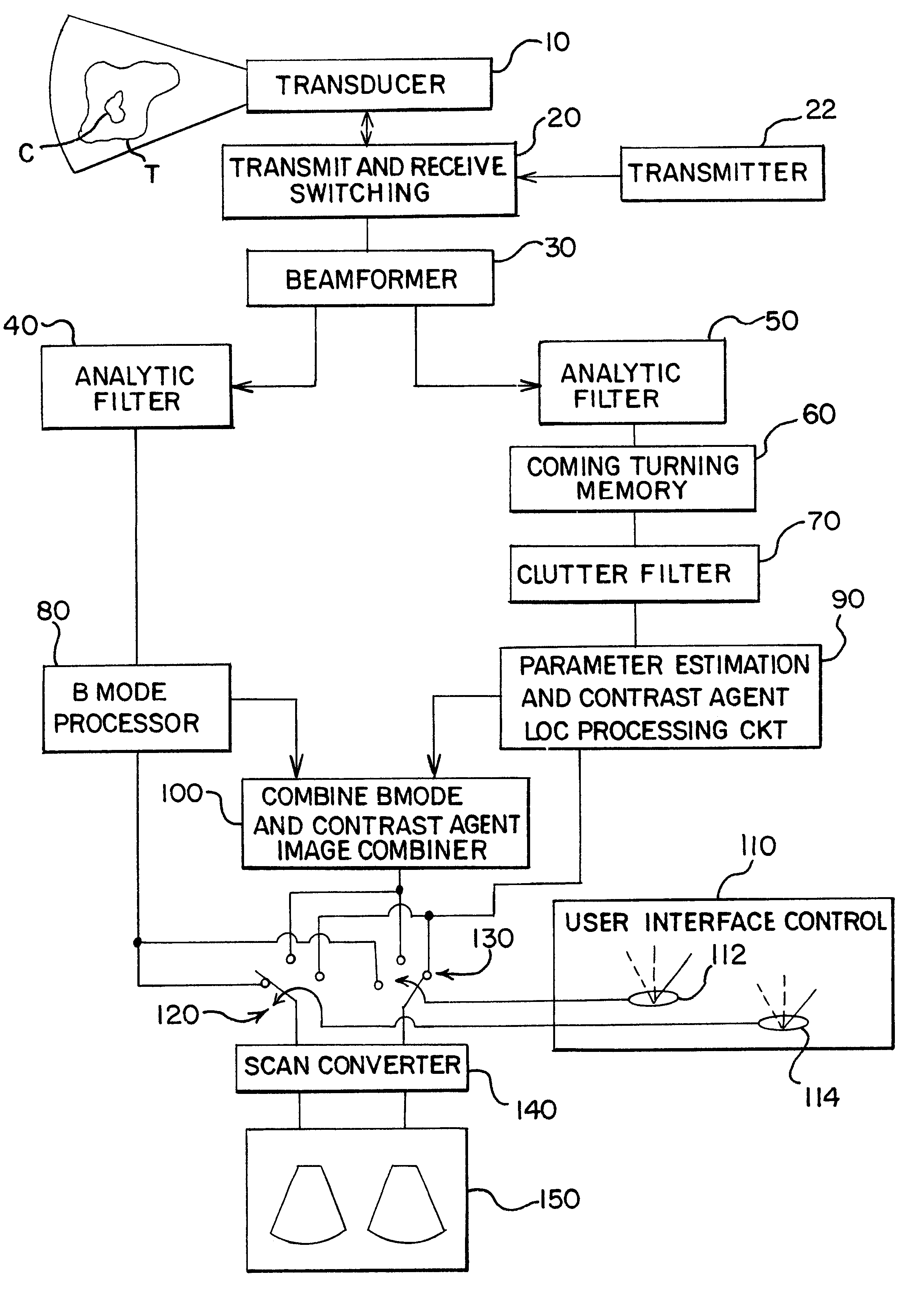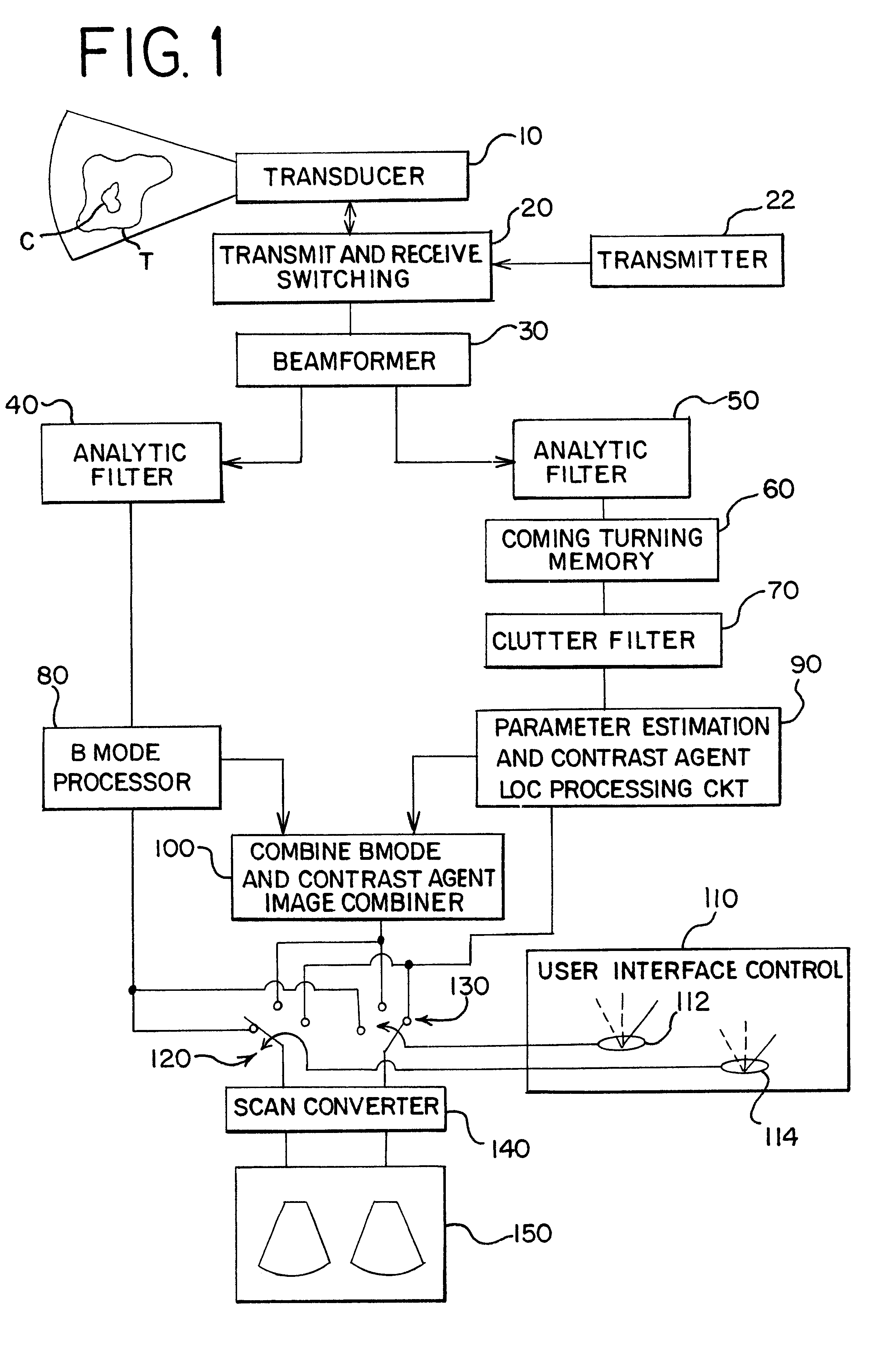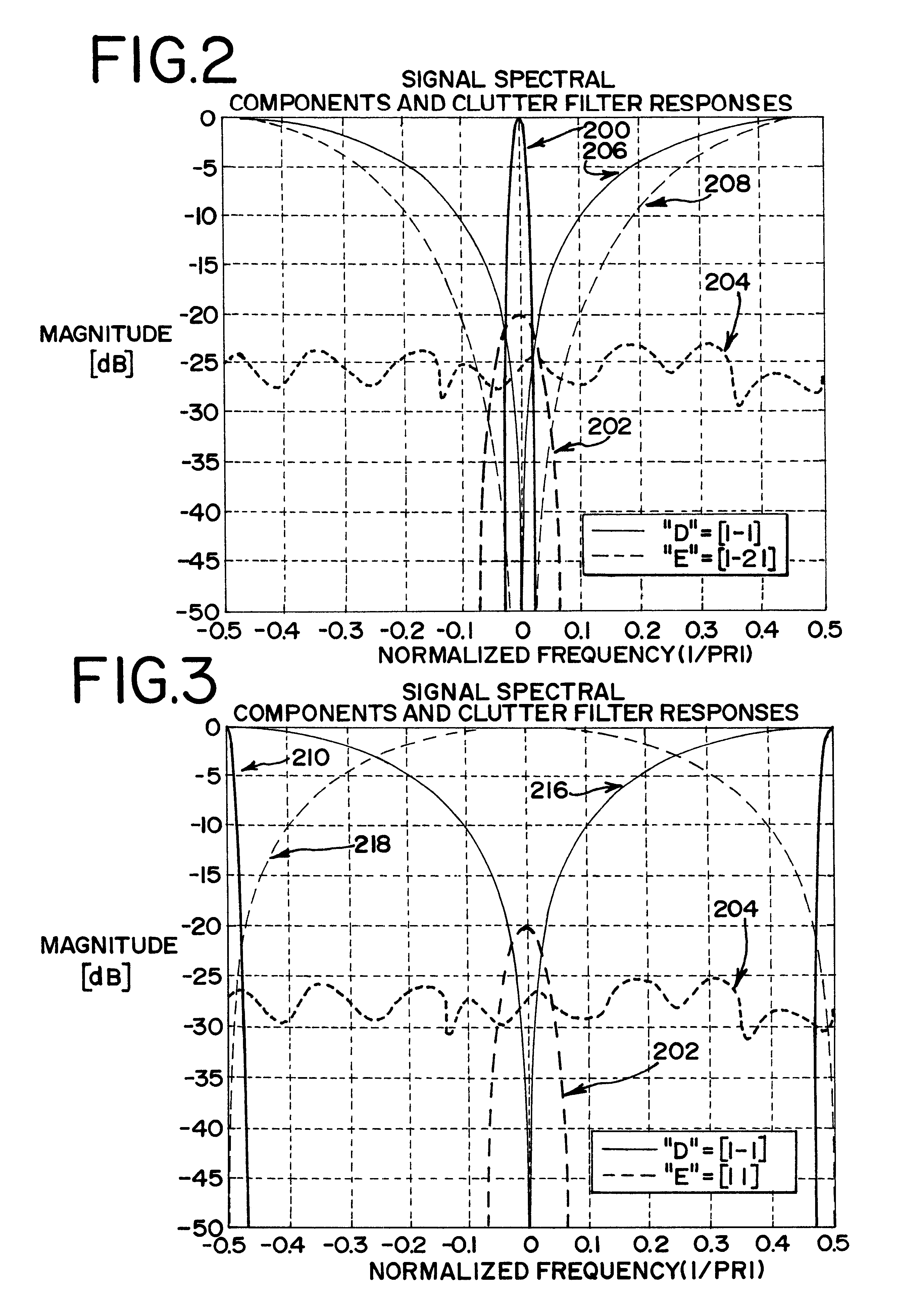Medical ultrasonic contrast agent imaging method and apparatus
a contrast agent and ultrasonic technology, applied in tomography, applications, instruments, etc., can solve the problems of limiting the bandwidth of returned signals, affecting the axial resolution of the returned signal,
- Summary
- Abstract
- Description
- Claims
- Application Information
AI Technical Summary
Benefits of technology
Problems solved by technology
Method used
Image
Examples
Embodiment Construction
Preferred Imaging System
Turning now to the drawings, FIG. 1 shows a block diagram of a medical ultrasonic imaging system that incorporates a preferred embodiment of this invention. This imaging system includes a phased array ultrasonic transducer 10 that is coupled with transmit and receive switching circuitry 20. During transmit, the switching circuitry 20 connects a transmitter 22 to individual elements of the transducer array 10. The transmitter 22 applies excitation signals to the respective transducer elements to cause the transducer 10 to transmit and beam of ultrasonic energy into a tissue T comprising a contrast agent C. The contrast agent C can be any contrast agent that is suitable for use in the particular application. The contrast agent sold under the trade name Levovist can be taken as one example.
The tissue T and the contrast agent C generate echoes in response to each transmit pulse, and the transducer 10 generates echo signals that are connected by the switching circ...
PUM
 Login to View More
Login to View More Abstract
Description
Claims
Application Information
 Login to View More
Login to View More - R&D
- Intellectual Property
- Life Sciences
- Materials
- Tech Scout
- Unparalleled Data Quality
- Higher Quality Content
- 60% Fewer Hallucinations
Browse by: Latest US Patents, China's latest patents, Technical Efficacy Thesaurus, Application Domain, Technology Topic, Popular Technical Reports.
© 2025 PatSnap. All rights reserved.Legal|Privacy policy|Modern Slavery Act Transparency Statement|Sitemap|About US| Contact US: help@patsnap.com



